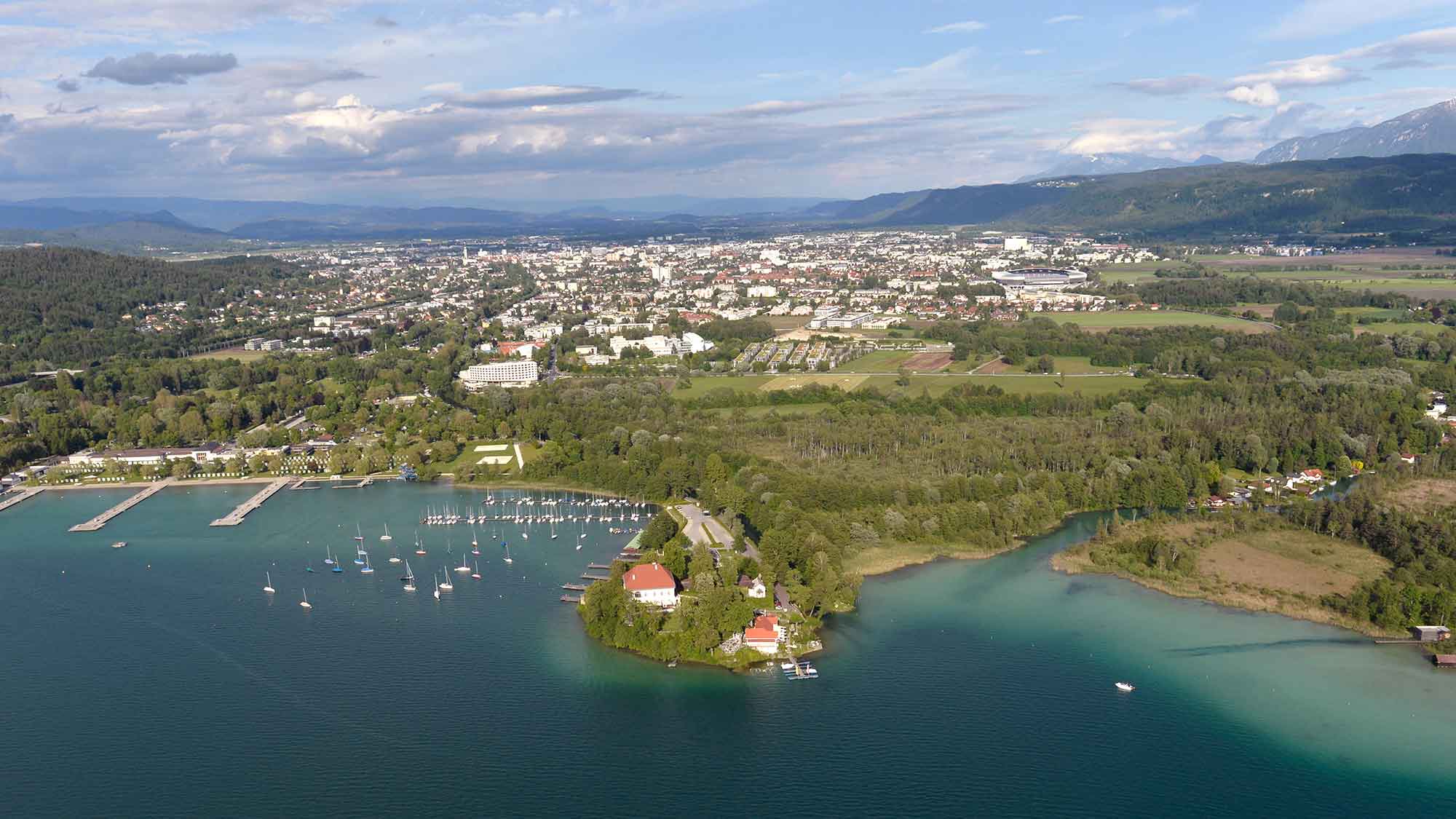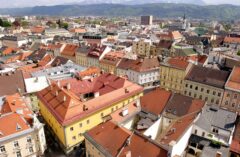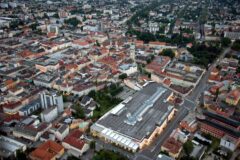Klagenfurt began gearing itself up for sustainable, climate-resilient development as long ago as 2017 with its “Smart City Climate Strategy”. It is the only city in Austria to be part of the EU-wide “100 Climate-neutral and Smart Cities 2030” mission and has been awarded the EU Mission Label for cities.u Being part of this EU initiative and working with the BMK on the mission “Climate-neutral City” is helping Klagenfurt to meet its ambitious climate targets.
A number of interdisciplinary and interdepartmental fields of action were identified as early as when the Smart City Climate Strategy was being devised in order to embed the “smart city” philosophy in all relevant areas of city life. The city then used this as a basis to compile a list of measures – 241 at the last count – for actually putting the strategy into place.
“Originally, the horizon we had in mind for climate neutrality was 2050, so a long way off,” explains Stefan Guggenberger from the city’s Climate and Environmental Protection Department. “However, by taking targeted action such as expanding our district heating network and buying in green electricity via our municipal utilities company, we were able to shrink our carbon footprint so much that we could make our climate targets more and more ambitious. Being part of the EU Cities mission has shown us that, in principle – if everything comes together – our Smart City Climate Strategy will allow us to become climate neutral by 2030.“
Stefan Guggenberger,
Climate and Environmental Protection Department,
Klagenfurt City Council
Sustainable energy supply
Klagenfurt is very well supplied with renewable district heating, with nearly half of the city’s buildings connected to the district heating system. And 90% of the energy for district heating now comes from renewable sources since a new biomass cogeneration plant came on stream. The municipal utilities company – the city’s largest generator and supplier of energy – now buys exclusively 100% certified green electricity. This has already enabled a significant reduction in harmful emissions from both heating and electricity.

The European mission has set itself the objective of helping European towns and cities of all sizes to become climate-neutral by 2030. These places are serving as test beds and innovation centres in an effort to enable all European towns and cities to achieve climate neutrality by 2050. The European Commission selected a total of 112 cities from all 27 EU member states, with Klagenfurt – a climate pioneer – representing Austria. The mission is pursuing a cross-sector, needs-based approach that generates synergy effects between initiatives already in place and aligns activities with what the cities actually require.
https://research-and-innovation.ec.europa.eu/funding/funding-opportunities/funding-programmes-and-open-calls/horizon-europe/eu-missions-horizon-europe/climate-neutral-and-smart-cities_en
Smart City Lab
Successfully devising and implementing innovative solutions on the path to climate neutrality relies on the right people and sufficient funds being available. Through cooperation as part of the “Climate-neutral cities” mission, Klagenfurt was able to build up further competencies and recruit additional staff. The newly opened Smart City Lab currently has five full-time employees working on getting climate-neutral projects from the Smart City Climate Strategy in a position to attract funding and managing their delivery. The team looks after the projects from start to finish: from application and submission through to actual implementation, writing final reports and conducting audits. “We’ve also unlocked some great synergy effects,” Guggenberger says. “At the same time as creating the Smart City Lab, we were also able to set up a citizens’ office, where business leaders, other stakeholders and anyone in Klagenfurt who is interested can come along and find out more about sustainability and climate protection.” The aim is to increase the number of participatory processes and get as many different stakeholders involved as possible in the future. Motivating young people is a particular priority, and the city is working closely with schools as well as with Klagenfurt’s youth council, which was created in a participatory process and consists of around 20 young people aged 14–19 who advise the city on various issues. The youth council also comes up with many ideas and projects of its own, which are then put into action with the help of city officials. With regard to climate protection, the young people are consulted on specific issues, e.g. developing city-centre squares or ideas for events.
Developing climate-resilient neighbourhoods
Klagenfurt has identified eight target areas for climate-neutral development in its Smart City Climate Strategy in order to demonstrate how climate protection can work in practice. These areas are parts of the city that are either undergoing or expected to undergo development. Furthest along in this process – and a prime example of it – is the district of Harbach, which hosted initial exploratory studies1 as long ago as 2016. A sustainably and climate-neutrally planned new neighbourhood that includes social housing is being built here. Guggenberger explains: “People have already started moving into the first few flats, and the plan is to complete additional stages of the building work gradually, every two to three years, between now and 2030 – and beyond.” The city is actively involved in the entire development process via the Smart City Lab and accompanying funding projects and provides a space for new technologies and climate-related measures to be evaluated under real-life conditions. The experience gained in the learning process will then be applied in the development of other neighbourhoods and districts.
Innovative mobility concepts
Whilst Klagenfurt is already well on its way to becoming climate-neutral in terms of its electricity and heat, its greenhouse gas balances over the past few years have shown that traffic emissions remain consistently high – and are even increasing in some areas. “This is why we’re taking targeted action to encourage residents to change their mobility behaviour,” Guggenberger points out. For example, Klagenfurt’s first multimodal transport hub has been set up in the new district of Harbach, boasting bus links, electric car-sharing and a bike rental scheme for e-bikes, bike trolleys and cargo tricycles. Parcel lockers have also been installed in a central location to aid the city’s logistics efforts. The plan is to use this area to trial these innovative solutions and services and gradually develop them further.
1 Also see: smartcities.at/projects/smart-living-in-klagenfurt-harbach


